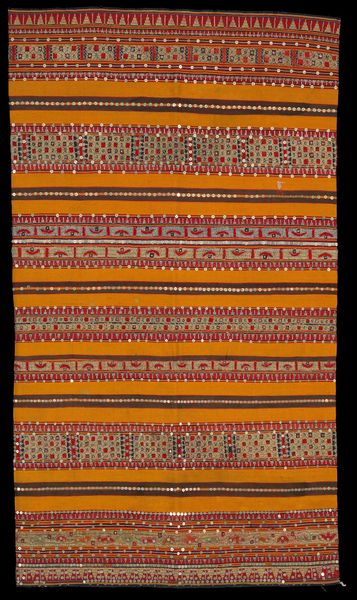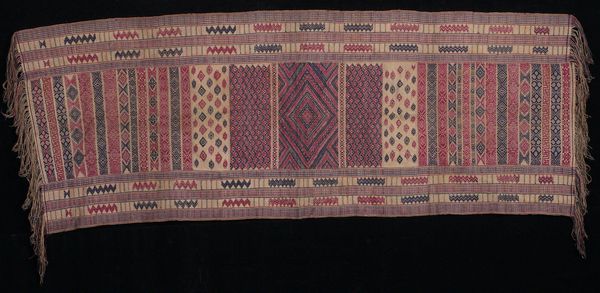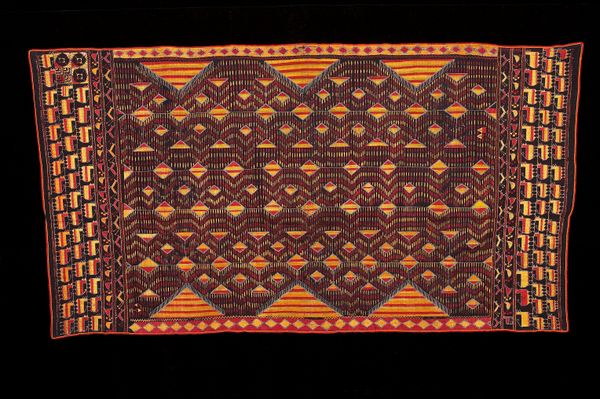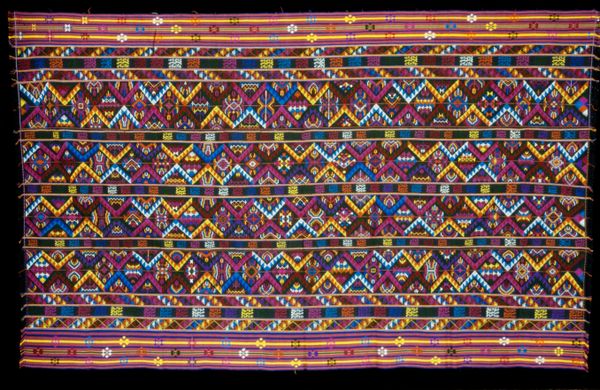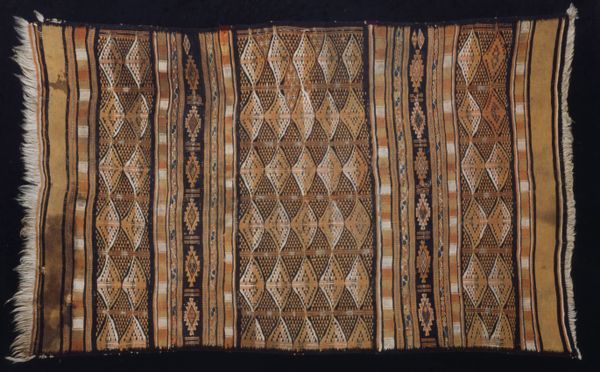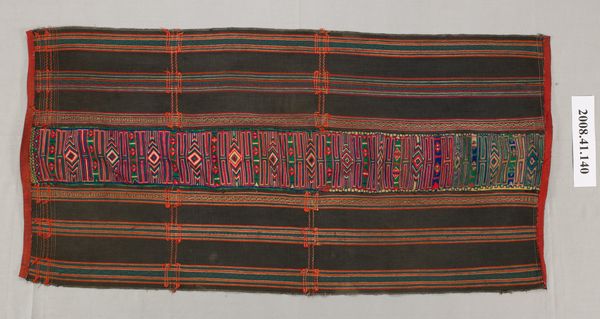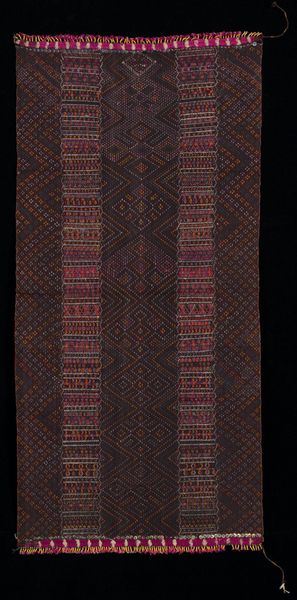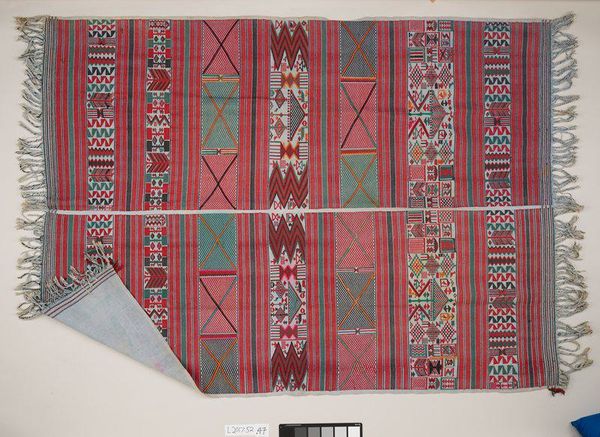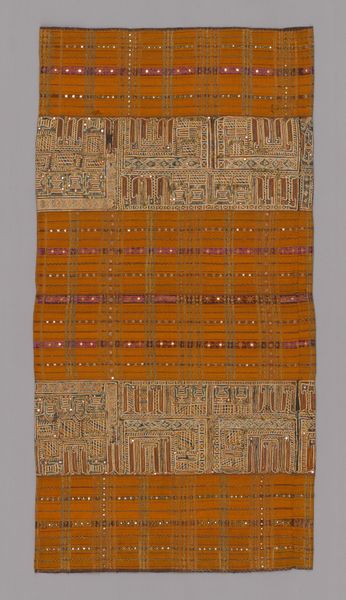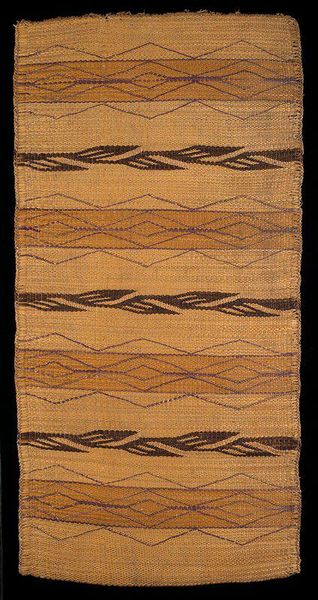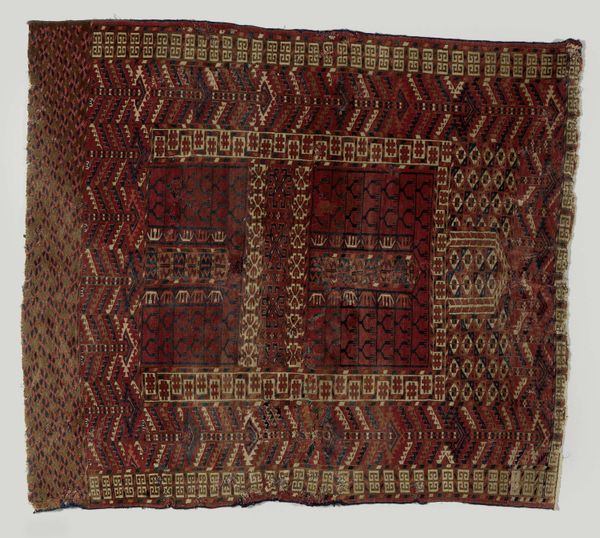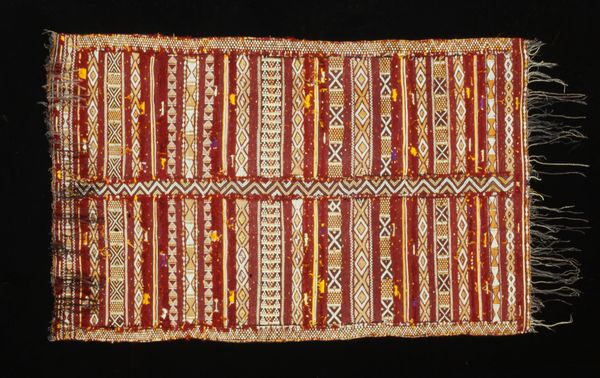
fibre-art, weaving, textile, wool
#
fibre-art
#
pattern
#
weaving
#
textile
#
wool
#
abstract
#
geometric pattern
#
abstract pattern
#
folk-art
#
organic pattern
#
geometric
#
orientalism
#
pattern repetition
Dimensions: 56 × 42 1/4 in. (142.24 × 107.32 cm) (without fringe)
Copyright: No Known Copyright
Curator: Let's turn our attention to this textile, simply titled "Rug," created around 1980, currently held in the collection of the Minneapolis Institute of Art. Editor: My first thought is how vibrant the earthy tones are. There's such intricate geometric work across the entire surface. Curator: Indeed. Its structure reveals layers of potential meanings. Notice the fiber work, the patterns of repetition, alluding to folk-art traditions with a dash of orientalist flair in how it might be interpreted. We have this beautiful display of repetitive geometries achieved through the technique of weaving. Editor: And beyond just visual appeal, one must think about the role of textiles. Are they inherently tied to cultural heritage, domesticity, labor? Do the creators intend a reading beyond simple aesthetic pleasure? Curator: Precisely! These visual and material cultures serve to blur high and low art. Moreover, what narratives or histories are intertwined with the geometric and abstract elements presented to us? Editor: It is also fascinating how the rug sits between two definitions. It’s clearly functional but also commands your gaze through its complex patterns and color choices. The organic pattern, too, disrupts total formality, injecting a sense of wabi-sabi, of lived experience. Curator: The rug seems to reflect intersectional dialogues by alluding to how various cultural and artisanal traditions are translated to this art form. The abstraction on display moves us from simply considering the function of 'rugs' and asks, "What histories of weaving have been woven into it?" Editor: Analyzing its physical being in relationship to its conceptual meaning, I am reminded of its ability to straddle dualities. Its very materiality—wool—speaks of both warmth and utility, whilst inviting abstract thought. It's that dialectic that creates a richer artistic experience. Curator: Exactly, there is far more here than simple adornment. Editor: I agree entirely. It provokes us to examine the boundaries and interminglings that shape visuality and historical narrative, whether through pattern, construction, or sheer existence.
Comments
No comments
Be the first to comment and join the conversation on the ultimate creative platform.

